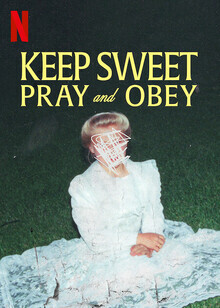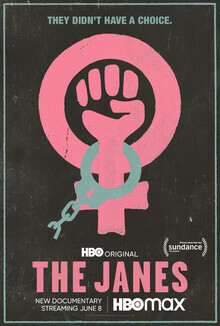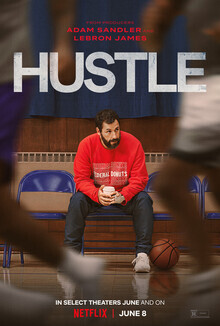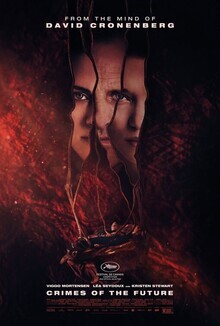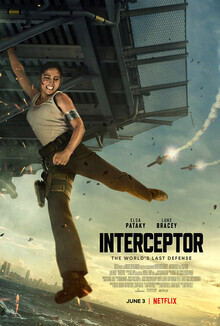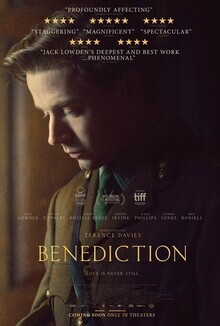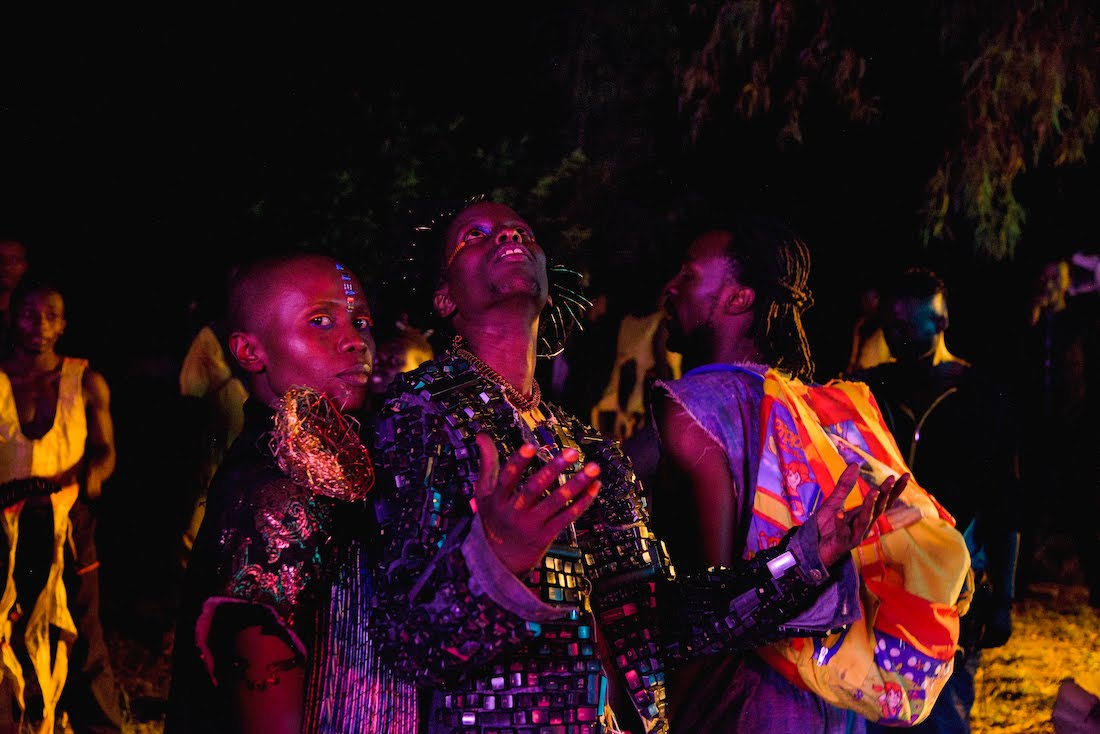
Originally envisioned as a graphic novel in 2013 with ideas later explored in the 2016 album MartyrLoserKing, the feature directorial debut from multi-hyphenate artist Saul Williams and Rwandan-born artist and cinematographer Anisia Uzeyman, “Neptune Frost” is a bombastic Afrofuturist sci-fi punk musical. After debuting as part of the Directors' Fortnight section at the 2021 Cannes Film Festival, it made festival rounds for months, including the Toronto International Film Festival, New York Film Festival, and this past Sundance. This Friday, June 3rd, it will make its American theatrical debut via Kino.
As rich in its thematic ideas as it is colorful, Williams and Uzeyman have crafted a universe all their own. Set in the hilltops of Burundi, “Neptune Frost” follows a group of escaped coltan miners who form an anti-colonial hacker collective. Featuring stunning performances from Elvis Ngabo and Cheryl Isheja as the titular Neptune, an intersex runaway whose newly found love leads the collective towards its progressive goals, “Neptune Frost” exists in a liminal space, between the binary, where freedom is found within nature and technology.
For this month’s Female Filmmakers in Focus column, RogerEbert.com spoke to Williams and Uzeyman over Zoom about the collaborative creative process, the poetics of filmmaking, and how Neptune’s story is actually a very old story.
This movie has not left my mind since I saw it during TIFF last September. I read you had originally envisioned this as a graphic novel and a stage musical before it evolved into a film. All three of those are very different mediums. How did you come to realize that it really should be a film?
SAUL WILLIAMS: It's true that it was conceptualized as a stage musical and a graphic novel.
ANISIA UZEYMAN: The music.
SW: Yeah, exactly. We never abandoned the graphic novel. That’s coming out next year. I'm just super surprised that we beat the graphic novel. On the other hand, the transition from the stage idea to the film idea happened after Anisia and I had already done a residency BANFF for the stage play. We had spent 14 days there working out the script for the stage. Then we started meeting with producers, and one of the people we met with became our lead executive producer. Stephen Hendel was like, I love this idea. He had produced Fela! on Broadway. So he goes, “This is awesome. I think that you all have what could be an even more awesome film.” We were maybe a bit dismissive at first, like no this is a stage play. That's also because we're both actors. So it was going to be a vehicle that we saw us both in. Once we thought about it, though, and realized what could happen if we got out of the way, that we would have the opportunity to work with all of this talent to show new faces and to shoot on location. It eventually transitioned into [a film] by 2016, because we started dreaming this up maybe around 2012. In 2016, we went to Rwanda. It was my first time, and it wasn't for Anisia of course. She brought me with her to Rwanda and we began focusing on shooting the sizzle reel, and met our cast and crew. We realized that we had made the best decision ever.
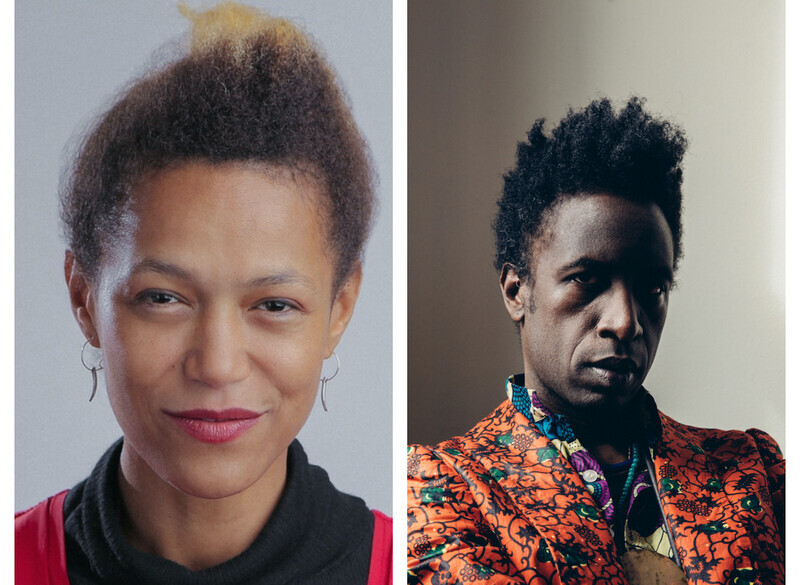
What was the casting process once you got to Rwanda? What kind of fresh faces were you looking for?
AU: It was very, very aligned. So we were there in 2016, just to feel the place and also with the artist that is working with us on the graphic novel.
AU: Yes, for him to be able to envision the place in which the story was taking place.
SW: Although we always knew the story took place in Burundi, we could not go to Burundi because of political unrest. We knew that the Rwandan landscape was very similar to the Burundian landscape.
AU: First we met Kaya Free, who plays Matalusa, in a very, very direct way. He was having a show where he was performing. Right after we talked and it just clicked. He was just so enthusiastic about the idea and Kaya is a Burundian refugee who was living in Rwanda at that time. We are in 2016 and there was a huge political unrest in Burundi in 2015. A lot of Burundian refugees were in Rwanda at that time. A lot of artists, activists, students, journalists, you name it. All those people were a part of the vibrant scene of Kigali at that time.
SW: Which was part of the synergistic alignment that Anisia was referencing, because we had a story that we knew was taking place in Burundi. We knew we had to shoot in Rwanda. We were going to audition and we were surprised to meet all of this new young Burundian talent intermingling with the Rwandan talent. So we met Kaya.
AU: We met Kaya, who introduced us to his best friend Trésor Niyongabo, who plays Psychology in the film, who is a journalist who was a student and who also escaped Burundi. Then he invited us one day, an afternoon on a soccer field. We arrived and discovered, like 15 Burundian drummers rehearsing.
SW: Carrying these huge drums on their heads.
AU: He was like those are my friends.
SW: These are my friends and they crossed the border as well.
AU: They had crossed the border with their huge drums, and were trying to find their place and to share their art in Kigali. Then we met Cheryl Isheja, who plays Neptune, one of the Neptunes, at an event. We saw her and we were like would you like to try this? Eventually we discovered that she was already a DJ, a beat maker, a singer, and that she was already a huge part of the local scene.
SW: So Anisia was holding screen tests at that time. We would bring people to the place where we were staying and Anisia would do screen tests with the actors and with the drummers.
AU: By 2016, I would say that half of our cast was already there, which allowed us to work with them longer.
SW: The stories they shared with us helped influence the writing of the script, because the script was not done. At that time, the music was not done. At that time we were even doing some recording there while they would tell their stories. So that went into some of the storytelling, even though we had a fleshed out concept and the story that we knew we were telling, their stories still found a way to get in there. We also met our costume designer, within the first week there, Cedric Mizero, who right after our first encounter, and us telling him what we were thinking and about the story, showed up at the second encounter with with sandals made of motherboards. And we were like, okay, you get it.
AU: He was 22 or 23 at the time. I would say that the story just attracted people. It's true that we didn't go into the usual casting process. Very interestingly, the story and the material that we were willing to explore was attracting the right people. It was just like, one after the other.
SW: You’ve got to meet so-and-so, so you need to know so-and-so, I'm gonna bring so-and-so by.
AU: We didn’t have a casting director, for instance.
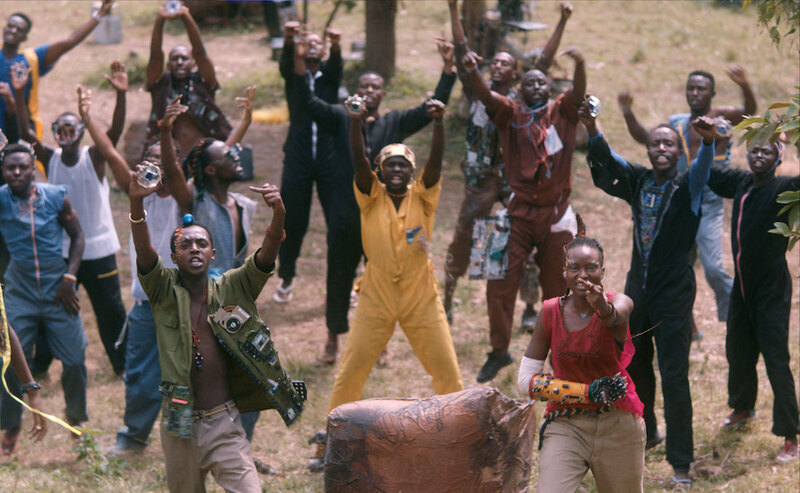
I love that story about the drummers, which reminds me of the way that the camera movement really captures the pulse of the music. How did you develop shooting the musical sequences?
AU: I think it all came from the fact that I was present when the music was created. I had the opportunity to follow every step of building up that music and the world building in terms of sounds. I would imagine movements. So, while writing the story, I was always orienting the writing towards what is the movement that can convey this, what is the color that can convey this emotion? I was very much almost choreographing the sequences.
SW: Very instructive to me in the writing process is that you have to consider the camera movement. In the writing process, she was like, but how would the camera capture this? She was focused on that. The idea of Anisia shooting it was because, personally, I was already in love with how she shot music, her relationship to the camera, and her relationship to shooting music and musicians already, not to mention the love that she has for actors, and how she shoots actors. And then the relationship to Rwanda of course.
AU: It was this crazy set building. As you see, there is a lot of ensemble movement, a lot of imagination, too, or inventions of ways of filming, because we worked with really unconventional material. Everything we built ourselves, the lights and all of those things. So it was really a question of meeting a creative moment, and also securing something that would be technically convincing. I think the fact is that to shoot a musical, every movement is talking or dancing. There is one scene that comes to my mind, which is in “The Wiz,” the musical that really inspired me. There is a scene in “The Wiz” where color changes and we see the lights as a character.
SW: Even the camera is a character.
AU: That type of playfulness and precision was really inspiring for me in terms of how the camera moves with the choreography, and then how it incorporates the colors as meanings as well as a beat. All of those things.
SW: That was super influential. I don't want Anisia to gloss over, she said it, but I want to make sure it’s clear we built the cinema lights, the rails, there was no rental facility there. So everything was built for the film, including the set and all that. The lights, the 18 kilos, the LED panels, we built all of that and Anisia oversaw the building of all of that. In the dream sequence actually, that's near the beginning of the film, they built a roller coaster around in this quarry. We were in this rock quarry in the scene that happens at night with a song called “Binary Stars.” It took forever. We didn't start shooting I don't know until 3am or something. It was a full moon. It was beautiful. They built this roller coaster traveling over this rock quarry. That's the movement of the camera Anisia was overseeing. It was all just fantastic to witness. Stressful in the moment.
AU: It was also putting the technical crew into a type of energy. Right? I remember we were doing pans when the music was there. So the set was music all the time.
SW: Yeah, I remember that scene with roach eggs, [singing] “I woke up in the morning ..." and so the rhythm of that is bom ... BOM ... bom. And I remember Anisia with the cameras moving to the drum like cha-CHA-cha. It was like "Holy f**k, okay, this is good." I was so excited that I threw my back out.
AU: It was for the dancers, singers and music playback. In terms of the technical crew, we had to meet them where they were.
I love the way you play with the idea of what is mine, but also the mind, and also the mining. Using this sort of poetic structure to explore the way those three things have different meanings and yet are connected.
SW: For someone who loves poetry, it's not something that I wanted to hide in any way in the film. I really, in many ways, see the big screen as a big page. As a way of being able to be playful with language in an imagined world. To imagine how these people communicate. So the greeting, “unanimous goldmine.” Or like you said, that question of what is mine, the question of proprietorship. There's a lot of research going into this film. When you think of the question of proprietorship in relation to the United States, with Indigenous lands and Indigenous peoples, and the Western idea of proprietorship, versus the idea of the land being something that you respect, that nobody owns, that question of what is mine resonates in that way.
Then what is mined, of course, deals with the recurring fact that we live our lives so heavily dependent on resources that we don't grow or mine in this country. I can't start my day without my coffee, your coffee, you know, where does it come from? Your tea? Where does it come from? The rubber in your tires, the cotton in your clothes, the gold in your watch, the coltan in your smartphone and lithium in your electric vehicle? Where does it come from? The answer is so often the same place, the same continent, the same reason, the same sort of exploitation. So the idea of what is mined and what is mine was something that I was trying to play with, for the sake of the freedom that we wanted to kind of explore in language, but also politically on screen. There'd be no question about what we were talking about, but also lots of questions.
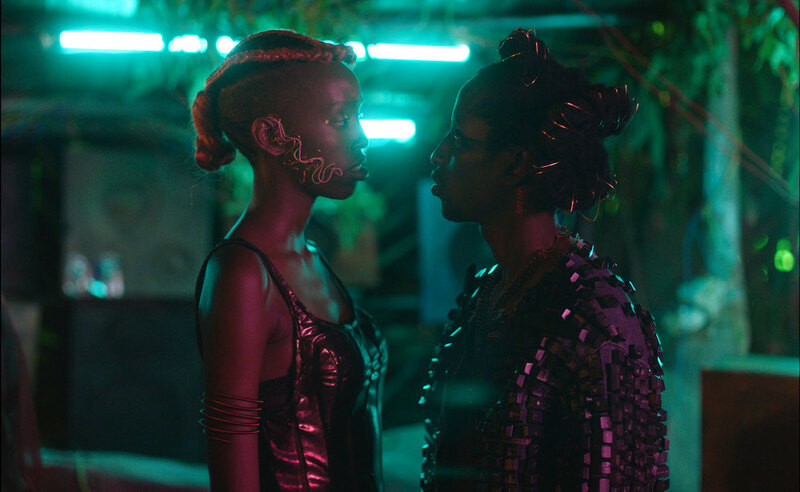
I definitely wrote down more questions than answers. Then when it was over, I was like, wow, I have to watch this again with a syllabus. You spoke a bit about casting Neptune, who is an intersex character, and there's a lot of play with gender in this film on top of every other thing that you're exploring. How did you develop this character and go about casting for them?
AU: The story is all about binary questions.
SW: It started there. The 01 the XY, the boom bap. All of these things. We went into it with those questions. Neptune was written as an intersex character from the beginning.
AU: I think the also poetic idea of having an intersex character is also to connect technology with ancestry, to connect mythologies with the future. What happens when you connect them? What is the power that is revealed? What is produced? There was a scene that is not there in the film, but that was also exploring how does somebody that is assigned male at birth receive the world and explore the world, and what does that person see and what they go through, and what is offered to them, and how those things shift when you step into ...
SW: ... your sense of self, as opposed to what's put on you.
AU: So that was really the story we were telling. There really is a lot that goes into the gaze that is put on you when you are assigned it or when you choose it. I think it was a way to talk about the very important political topic. At that moment, Kenya, Uganda, all the countries around where we were shooting in East Africa, were going through very violent laws. Very neo-colonial laws.
SW: American evangelists were arriving in a lot of these countries and waving money and saying, you know, here's a law that at the time, they thought they'd never be able to pass in the States. But we'll get this type of money if you can pass this law here. So there's a lot of gay and anti LGBTQIA laws still. You even feel it even more heavily now here in the US too. There was a desire that we had to speak to and through the times. As we were browsing our timelines, we had, like you, a lot of questions. We had a lot of questions about technology and analog exploitation. A lot of questions about this rigidity surrounding questions of gender and realities of gender. Of course, we're also playing with, as we stated, this exploration of smashing or stepping beyond the binary. So how do we illustrate that? How do we illuminate that? So the casting and all of that reflected all of these things. At the end of the day, we knew how we wanted people to ingest it. We knew that we wanted it to have that sense, almost like a fairy tale, and so this seems like the best way to achieve that.
AU: How do you have a transformative experience? What is a transformative experience? And how do you incorporate it in a tale? We were at Kaya’s house, because we potentially wanted to cast Kaya’s mother as the nun.
SW: Kaya’s mother is extremely religious, and so she was like, I don’t act. I don't believe in this. What is the story about? So, with a bit of hesitancy, I tell the story of the film. And this woman, who we know to be extremely religious and rigid, says, “Oh, change his gender like that? Well, Kaya, that's just like the story that I used to tell you as a kid. This is an old folk tale. This is an old Burundian folk tale. This story already exists. It's a Burundia folk tale. It's been existing. We've always known this.” That's the other thing, right? That rigidity is neo-colonial. That rigidity is imposed. We know better than that. And so part of our interest here was in liberating that type of storytelling and narrative. It was a beautiful surprise. She didn't actually end up playing the nun. We actually were gifted by the presence of Cécile Kayirebwa, who's a beloved iconic Rwandan figure, singer and poet, who wound up playing the nun. That was another beautiful surprise. Her willingness to make her screen debut at the age of 75, and to enchant the cast, and the film, and in that way sort of like handing down to a new generation of artists. But, it was illuminating to sit with Kaya’s mother and think we're telling a new modern story, and for her to say that’s a very old story.
AU: In a way, we all know it. We just make such a big deal of it because we are used to it being a big deal. If you are doing a tale on what is oppression, what is exploitation, at one time you will meet at the intersections of all of it. It’s an assignment, as in gender.
SW: You’re going to learn what was imposed. You're going to learn the history of where things are being imposed.
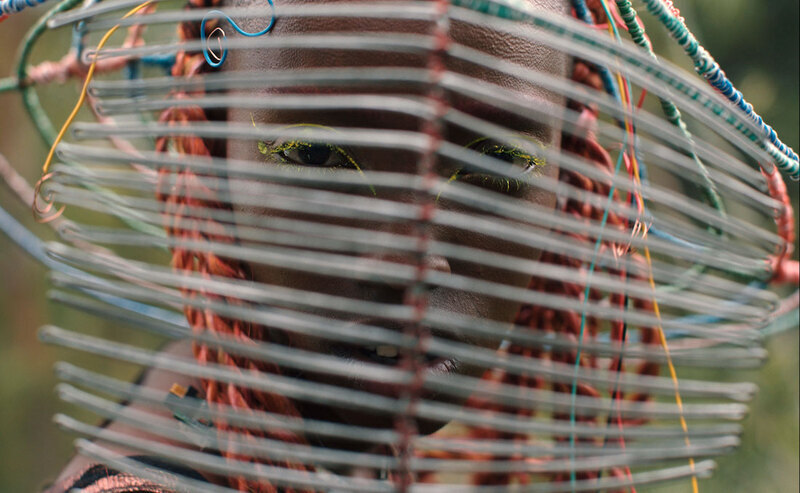
Not to bring it back to a binary again, but are there any female directors who have made films that have inspired you or that maybe you think people haven't heard of and that they should seek out?
AU: From the top of my head I’m thinking about “Losing Ground” by Kathleen Collins. An important discovery for me. There is a full part of films, especially of women filmmakers from America, that are very difficult to access outside of this country and already in this country it was difficult to find. I knew that it was important. I looked for it for a long time before I could find it, and then suddenly it became available. That film is, I think, very beautiful. The definition of what a woman has to say and how she says it. I'm also thinking of Naomi Kawase. The film that she did with that grandmother who lost her child. What is the name of that film? It has beautiful shots in tea plantations.
“The Mourning Forest.”
AU: Her cinematography, her way of conveying nature that is almost an embrace of those characters, that is almost like a consolation, that is working organically towards grief. I like her very much. Maya Deren, of course, because in terms of filming music. It's funny, there is that film, “Divine Horsemen: The Living Gods of Haiti,” that she did, she didn't have the time to put together right before she died. So the film that is out there has that weird voiceover. That masculinity that is put on it. But you can still see herself in the film. It's her images, it's her camera, and it's her movement. She's filming dances and trances, and it feels less as if the camera and her body are really in symbiosis with those movements. Some of those images are just very rare and very invested. I was talking with a friend of mine, and I forgot that in fact, she died right after that. She went into that magic space. We were talking about how maybe those spirits didn't want her there. What happened, what happened? What made this? You kind of feel that in that material. I wish there was a version with no voiceover, also I wish she could have finished the filming so we could have seen what she really wanted to do with it. Maya Deren is certainly somebody. Who am I forgetting?
SW: Chantal Akerman.
She's amazing. Do you have a favorite of hers? She had so many films.
AU: “Jeanne Dielman” is a masterclass. A masterclass in patience. In relationship to characters. I also love ... I’m not going to remember the title in English. “Je Tu Il Elle.” She films herself. It is a very beautiful self-portrait, and also about how do you share uncomfortable feelings? How do you deal with your gender and your sexuality? How does that all come into you? And how do you share it? I think it's so beautiful.
"Neptune Frost" will be playing in select theaters starting June 3.
Marya E. Gates is a freelance film and culture writer based in Los Angeles and Chicago. She studied Comparative Literature at U.C. Berkeley, and also has an overpriced and underused MFA in Film Production. Other bylines include Moviefone, The Playlist, Crooked Marquee, Nerdist, and Vulture.
